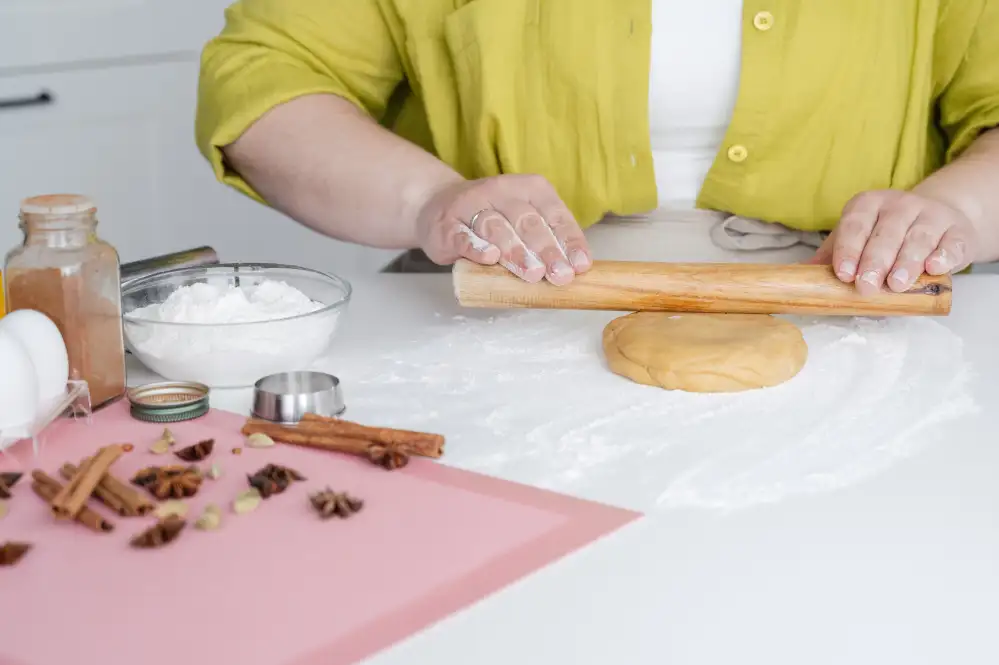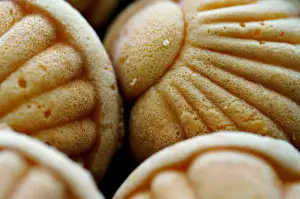Master the Art of Making Delicious Cookie Dough: A Step-by-Step Guide

Cookie dough is a versatile and delicious base for a variety of cookies. Whether you prefer classic chocolate chip or want to experiment with unique flavors, mastering the art of making cookie dough is essential. With just a few simple steps, you can create restaurant-quality cookie dough right in your own kitchen. In this step-by-step guide, we will walk you through the process of making perfect cookie dough every time. So grab your mixing bowl and let's get started!
Gather Ingredients for Cookie Dough
To make delicious cookie dough, you'll need to gather all the necessary ingredients. Here's what you'll need:
1. Flour: Use all-purpose flour for a classic cookie texture.
2. Baking soda: This will help your cookies rise and become light and fluffy.
3. Salt: Just a pinch of salt will enhance the flavors in your cookie dough.
4. Butter: Opt for unsalted butter, as it gives you more control over the saltiness of your cookies.
5. Granulated sugar: This will add sweetness to your cookies and help them spread while baking.
6. Brown sugar: Brown sugar adds moisture and a hint of caramel flavor to your cookies.
7. Eggs: They provide structure and richness to the dough.
8. Vanilla extract: A splash of vanilla extract enhances the overall flavor of your cookies.
9. Optional mix-ins: Chocolate chips, nuts, or dried fruits can be added for extra texture and taste.
Make sure to have all these ingredients ready before starting to make your cookie dough.
Mixing the Cookie Dough Ingredients
When it comes to making delicious cookie dough, the first step is mixing the ingredients together. Start by gathering all your ingredients, including flour, sugar, butter, eggs, and vanilla extract.
In a large mixing bowl, cream together the butter and sugar until light and fluffy. This can be done using an electric mixer or by hand with a wooden spoon. Make sure to scrape down the sides of the bowl to ensure everything is well incorporated.
Next, add in the eggs one at a time, beating well after each addition. This will help create a smooth and creamy texture in your dough. Don't forget to add in the vanilla extract for that extra burst of flavor.
Once the wet ingredients are well mixed, it's time to incorporate the dry ingredients. In a separate bowl, whisk together the flour, baking powder, and salt. Gradually add this mixture into the wet ingredients, mixing until just combined.
Be careful not to overmix at this stage as it can lead to tough cookies. It's important to stop mixing as soon as all the dry ingredients are fully incorporated into the dough.
By following these steps and taking care during the mixing process, you'll be well on your way to creating a perfect batch of cookie dough that will yield delicious homemade cookies every time.
Incorporating the Dry Ingredients
Incorporating the dry ingredients is an important step in making delicious cookie dough. Start by measuring out the required amount of flour, baking soda, and salt into a separate bowl. Whisk them together to ensure they are evenly combined. This step helps to distribute the leavening agents and salt throughout the dough, resulting in a more uniform texture and flavor. Once the dry ingredients are mixed, gradually add them to the wet ingredients while stirring gently. Be careful not to overmix at this stage as it can lead to tough cookies. Incorporate the dry ingredients just until they are fully combined with the wet mixture, ensuring there are no pockets of flour left. The dough should be soft and slightly sticky at this point.
Adding the Wet Ingredients
Once you have incorporated the dry ingredients into the mixture, it's time to add the wet ingredients. This step is crucial as it helps bind the dough together and adds moisture for a soft and chewy texture.
Start by adding room temperature butter to the mixing bowl. Butter adds richness and flavor to the cookie dough. Make sure it is softened but not melted, as melted butter can alter the texture of your cookies.
Next, add granulated sugar and brown sugar to the bowl. These sugars provide sweetness and help create a tender texture in your cookies. Mix them with the butter until well combined.
Now it's time to add eggs. Crack them into a separate bowl first to ensure no shell pieces end up in your dough. Then, one at a time, add them to the mixing bowl, beating well after each addition. Eggs act as a binding agent and contribute to both structure and moisture in your cookies.
To enhance the flavor of your cookie dough, add vanilla extract or any other desired flavorings at this stage. A teaspoon or two should be enough depending on your preference.
Once all the wet ingredients are added, mix everything together until fully combined. Scrape down the sides of the bowl occasionally to ensure even mixing.
Remember not to overmix at this stage as it can lead to tough cookies. Stop mixing once all ingredients are incorporated and you have a smooth and creamy dough.
With the wet ingredients added, your cookie dough is now ready for its final touches before baking!
Mixing the Dough Until Combined
Once all the wet and dry ingredients have been added to the mixing bowl, it's time to start mixing the dough. Using an electric mixer or a wooden spoon, begin stirring the ingredients together until they are well combined. Make sure to scrape down the sides of the bowl to ensure that all of the ingredients are fully incorporated. Continue mixing until you have a smooth and cohesive dough. Be careful not to overmix, as this can result in tough cookies. Once the dough is mixed, it's time to move on to the next step: adding optional mix-ins.
Adding Optional Mix-ins
Once you have mixed the basic cookie dough, it's time to take it up a notch by adding some optional mix-ins. This is where you can get creative and customize your cookies to your liking.
There are endless possibilities when it comes to mix-ins. You can add chocolate chips, nuts, dried fruits, or even candies. The key is to choose ingredients that complement the flavor of the cookie dough.
To incorporate the mix-ins, simply fold them into the dough using a spatula or wooden spoon. Be gentle so as not to overmix and break up the add-ins.
Remember that different mix-ins may require different measurements. For example, if you're adding chocolate chips, you might want to use around 1 cup for a standard batch of cookie dough. However, if you're adding nuts or dried fruits, you might want to use around ½ cup.
Feel free to experiment with different combinations of mix-ins. You could try adding white chocolate chips and macadamia nuts for a decadent treat or cranberries and pecans for a festive twist.
Adding mix-ins not only adds extra flavor but also gives your cookies an interesting texture. The crunchy texture of nuts or the gooeyness of melted chocolate can take your cookies from ordinary to extraordinary.
Just be mindful not to overload your cookie dough with too many mix-ins as this can affect the overall texture and structure of the cookies.
Once you have added your desired mix-ins, proceed to chill the cookie dough before shaping and baking. This will help prevent spreading during baking and ensure that your cookies hold their shape.
Adding optional mix-ins is a fun way to elevate your cookie game and make them truly unique. So go ahead and get creative with flavors and textures – your taste buds will thank you!
Chilling the Cookie Dough
Chilling the Cookie Dough is an important step in the process of making delicious cookies. Once you have mixed all the ingredients together, it is crucial to chill the dough before shaping and baking. Chilling helps to solidify the fats in the dough, resulting in a better texture and flavor. It also allows the flavors to meld together, creating a more complex taste. To chill the dough, simply cover it with plastic wrap and refrigerate for at least 1 hour or overnight. This will give the dough time to rest and firm up, making it easier to handle and shape into cookies. So don't skip this step! Chilling your cookie dough will elevate your homemade cookies to restaurant-quality status.
Shaping and Baking the Cookies
Once your cookie dough is chilled, it's time to shape and bake the cookies. Preheat your oven to the recommended temperature stated in your recipe. Line a baking sheet with parchment paper or silicone baking mat.
To shape the cookies, scoop out about 1-2 tablespoons of dough and roll it into a ball using your hands. Place each ball onto the prepared baking sheet, leaving enough space between them for spreading during baking.
If you prefer flatter cookies, gently press down on each dough ball with the palm of your hand or the bottom of a glass. For thicker cookies, leave them as they are.
Now it's time to bake! Place the baking sheet in the preheated oven and set a timer according to your recipe's suggested baking time. Keep an eye on them towards the end to prevent over-browning.
Once baked, remove the cookies from the oven and let them cool on the baking sheet for a few minutes before transferring them to a wire rack to cool completely. This will help them firm up slightly and prevent them from breaking apart.
Enjoy your freshly baked homemade cookies! Serve them warm with a glass of milk or let them cool completely before storing in an airtight container for later enjoyment.
Tips for Perfect Cookie Dough
1. Use room temperature ingredients: Make sure your butter, eggs, and any other wet ingredients are at room temperature before incorporating them into the dough. This will ensure that everything mixes together smoothly and evenly.
2. Measure accurately: Baking is a science, so it's important to measure your ingredients accurately. Use measuring cups and spoons specifically designed for dry or wet ingredients to ensure precise measurements.
3. Cream the butter and sugar properly: Creaming the butter and sugar together until light and fluffy is crucial for achieving a tender and chewy cookie texture. Beat them together on medium speed for about 2-3 minutes until well combined.
4. Don't overmix the dough: Overmixing can lead to tough cookies. Once you've added the dry ingredients, mix just until everything is combined. Overmixing can activate gluten in the flour, resulting in a denser cookie.
5. Chill the dough before baking: Chilling the dough helps prevent spreading during baking and allows flavors to meld together. Wrap the dough tightly in plastic wrap and refrigerate for at least 1 hour or overnight for best results.
6. Experiment with mix-ins: Get creative with your cookie dough by adding mix-ins like chocolate chips, nuts, or dried fruits. Fold them into the dough gently after it has been mixed to avoid overworking it.
7. Use parchment paper or silicone mats: To prevent cookies from sticking to the baking sheet, line it with parchment paper or silicone mats. This also makes cleanup easier.
8. Rotate baking sheets halfway through baking: For even browning, rotate your baking sheets halfway through baking time to ensure all cookies are cooked evenly.
9. Allow cookies to cool completely before storing: Cookies continue cooking as they cool down, so allow them to cool completely on a wire rack before storing them in an airtight container.
Follow these tips, and you'll be well on your way to mastering the art of making perfect cookie dough every time. Happy baking!
In conclusion, mastering the art of making delicious cookie dough is a skill that can elevate your baking game to new heights. By following this step-by-step guide, you can create restaurant-quality cookies right in the comfort of your own home. Remember to gather all the necessary ingredients, mix them together with precision, and incorporate any desired mix-ins for added flavor. Don't forget to chill the dough before shaping and baking it to ensure perfectly soft and chewy cookies every time. With these tips and techniques, you'll be able to create mouthwatering cookie dough that will impress even the most discerning palates. So go ahead, unleash your inner chef, and enjoy the sweet rewards of homemade cookie goodness!
Published: 03. 02. 2024
Category: Recipes



